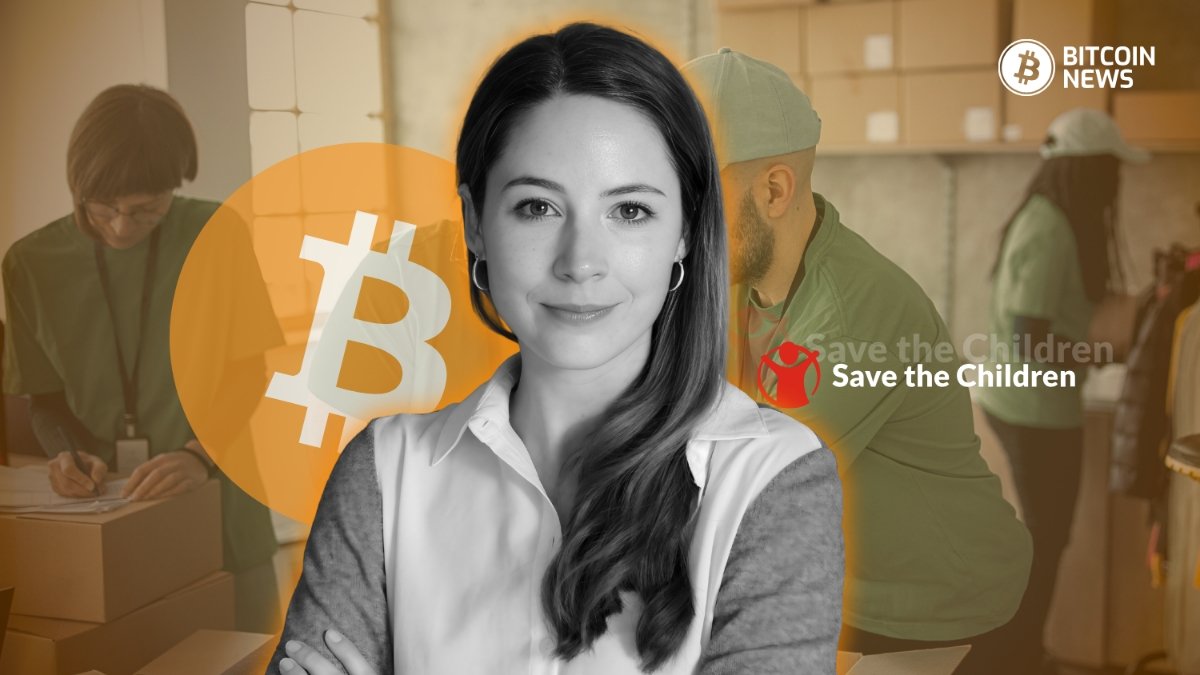Save the Children has been around for more than a century. They’ve worked through wars, earthquakes, and everything in between. In 2013, they also did something no large charities would touch: they accepted a bitcoin donation, becoming the first international NGO to do so.
The push came from a donor during Typhoon Haiyan in the Philippines. According to Antonia Roupell, Innovation and Tech Partnerships Lead, the organization “found a way to accept it,” and a door opened.
Today, that door is more than a donation page.
Under Antonia Roupell’s leadership, Save the Children is attempting to use Bitcoin, not just accept it. The goal is simple and practical: get money to families faster, with fewer bottlenecks, and give people the dignity to decide what they need most.
“In some circumstances we’ve found providing families with money, rather than other forms of assistance, enables them to prioritize their family’s needs,” Antonia said. Last year, Save the Children distributed around $140 million in cash assistance, and that number is growing.
From Convert to Fiat to Operate in Bitcoin
Most big charities that accept digital assets instantly sell them. Save the Children can do that too. But the Bitcoin effort Antonia leads is different. The team wants to hold bitcoin and, more importantly, operate with it where it makes sense.
“It was clear from bitcoin donors that we needed to find a way to accept and hold bitcoin donations. But to really unlock its potential, we are taking our Bitcoin Fund a step further–operationalizing the bitcoin,” she said.
With permission from donors, Save the Children is pledging to hold donations for up to four years and, during that time, aim to use that Bitcoin to supercharge their humanitarian and development programs.
Why does that matter? Because speed and access matter. Antonia described flying to an earthquake zone in Sulawesi, Indonesia in 2018. It took her two days and three flights.
Meanwhile, international funds still hadn’t reached the Jakarta office. Weekends, cross-border correspondent banks, and legacy rails all add friction, faced by the humanitarian sector at large. In emergencies, friction like this can be a matter of life and death.
“Even sending funds domestically, within the U.S. can take days to clear,” she said. Bitcoin and stablecoins can help Save the Children get ahead of that timeframe.
Cash Assistance First
Cash assistance, i.e. providing families with money, is the obvious starting point. In many countries, a bank account is a luxury, not a given. A phone, internet connection and a wallet app, however, might be within reach.
“We’ve tested in places like Bhutan,” Antonia said. They can send funds to a wallet someone downloads in minutes, no bank account needed. The off-ramps converting bitcoin to cash still have a way to go, but that first step is significant.
This isn’t a starry-eyed ideation. It’s operations. Save the Children works in more than 100 countries and must coordinate with governments and partners to reach millions of kids safely every year.
As Antonia put it, they’re practical: “Our priority is reaching kids facing the greatest challenges. We’re agnostic on technology.”
That pragmatism also means stablecoins will play a role in some contexts. But the center of gravity for this fund is clear: Bitcoin as a settlement rail and, where possible, as a medium of exchange.
A Push for Transparency and Independence
Antonia also connected Bitcoin to a broader funding challenge facing the entire sector. “Foreign aid cuts have hit the humanitarian sector hard. It has been a real reckoning,” she said.
“We realized we need to ultimately decentralize our dependence on governments and institutions and pioneer new ways of working so that we can continue to deliver our life-changing work around the world.”
Since announcing the Bitcoin humanitarian fund at the Plan B Forum in Lugano, Save the Children has heard from other major NGOs asking how it works. Leadership matters, and so does road testing. Someone has to go first so others can follow, preferably with lessons learned.
Bringing Bitcoin Home to U.S. Disasters
Don’t assume this is only for far-flung places. If the Bitcoin Fund grows, Save the Children wants to use it in the next U.S. emergency, whether in response to hurricanes or wildfires, so families can receive support faster.
“Save the Children is known for being one of the first responders in emergencies and, if our Bitcoin Fund is successful, we plan to integrate Bitcoin into the cash assistance that gets distributed to families in the aftermath of the next domestic emergency,” Antonia said.
The timing feels right. Point of sale acceptance has improved with Square rolling out Bitcoin payments for all their merchants, which could let families spend directly without off-ramping, and the payment rails don’t close on weekends.
Conflict, Kids, and Hard Truths
Bitcoin won’t stop a hurricane. It also won’t end conflict. But it can make aid more responsive, and it can give families a way to receive value when banks are shut, out of reach, or unsafe.
Antonia didn’t sugarcoat the reality. Globally, one in six children today live in a conflict-impacted area. One in five kids in the U.S. is food insecure. Save the Children’s mission is to protect children’s access to health, education, and safety, wherever these basic rights are threatened.
On the long arc, she sees something else Bitcoin can do: protect private property and reduce the payoff for seizure. If you can’t easily pillage someone’s savings, the incentive to wage war for loot weakens. That’s a bigger conversation, but it’s on her mind.
“At Save the Children we see Bitcoin as a monetary technology that can be used as a force for good and a force for financial inclusion.
Our role is not advocating for global Bitcoin adoption but rather supporting the education and uses of peer-to-peer technologies, like Bitcoin, to deliver maximum value and financial solutions to those who need them most.”
The Playbook So Far
Accept Bitcoin (and other digital assets): Yes. If it comes in through the standard channels, it’s usually converted to fiat immediately for programs.
Cash assistance pilots: Early tests show people can receive funds quickly via wallet apps without a bank account. Off-ramps vary by country.
Bitcoin Humanitarian Fund: A dedicated track to hold and use bitcoin, with a pledge to hold up to four years and operationalize during that time with donor permission.
U.S. emergency plan: Use Bitcoin for domestic disaster cash assistance if the fund reaches sufficient size.
Growing interest from peers: Other large NGOs are asking how to replicate the model.
Donate: There’s a number of ways which you can support.
- It’s giving season and you can help reduce your U.S. capital gains by donating bitcoin to Save the Children here.
- To get involved in Save the Children’s Bitcoin Fund, start a conversation, email [email protected].
Learn More: You can find out more about Save the Children’s Bitcoin journey on their website.
To inquire about funding the Bitcoin Humanitarian Fund or partnering on pilots, you can reach out to: [email protected].
There’s one practical note for would-be donors: right now the fund is geared toward larger gifts and pooled contributions while the program scales. Grassroots projects, gaming communities, or companies are already exploring pooling to reach the current minimum for the fund.
What About Nostr and Lightning Zaps?
Antonia has experimented with Nostr and is curious about spinning up a relay to make real-time micro-support easier. Think field updates, direct zaps, and transparent flows.
It’s early days, and Save the Children has to be careful with safety, privacy, and compliance, but the appetite to test is there. If you run a wallet company, a relay, or a payments platform, this is your opportunity.
AI in the Mix
Yes, they’re looking at AI, carefully. The organization handles sensitive data, so privacy and bias matter.
Antonia’s interest leans toward private, local, or privacy-preserving tools that help teams work faster while above all protecting vulnerable people. If you’re building those, knock on the same door: [email protected].
Why This Story Matters to Bitcoiners
Plenty of institutions “accept bitcoin.” Far fewer try to use it in the field. Antonia Roupell’s focus is practical: reach more kids, faster, with fewer gatekeepers and clearer accountability.
“If we can lead the way, then others will integrate, and we can also learn from them,” she said. “It’s only going to make lasting change when we all integrate these kinds of technologies.”
That’s the challenge and the invitation. If you’re a donor, builder, or operator who wants Bitcoin to help real families in hard places, Save the Children is giving you a concrete way in. If you care about proof of work outside the price and hash rate charts, this is it.






